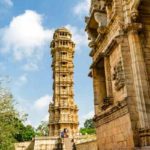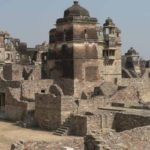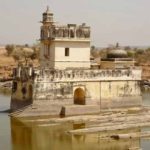Chittorgarh Tourism is a major city of Rajasthan state. It lies on the bank of the river Berach and Gambhiri. It is a famous tourist location because of its palaces. The cement factories in Chittorgarh are also well known. It is a hub for construction business as marble and granite are extracted from here. Chittor fort is the largest fort in Asia. Many fights between Hindus and Muslim invaders took place here. Rani Padmavati of Chittorgarh committed mass suicide with other women in the palace after they were defeated by the Mughals. Tourists visit the palace with curiosity about the stories.
Many temples and monuments dated back to the 15th century were built in sandstone in Chittorgarh Tourism. Vijay stambh is a must visit hilltop and it is also illuminated in the night. FatehPrakash Palace is a museum also. There are regional sculptures and terracotta figurines on display. Ancient coins and other wooden craft collectibles make your visit worthy. Also, GaumukhKund is a “kund” meaning a sacred water reservoir is a special place to visit. Here spring water flows from cow’s mouth shaped rock. The Bassi Wildlife Sanctuary is for animal lovers. It is home to many animals such as panthers and antelope. Many migratory birds stay at this sanctuary.
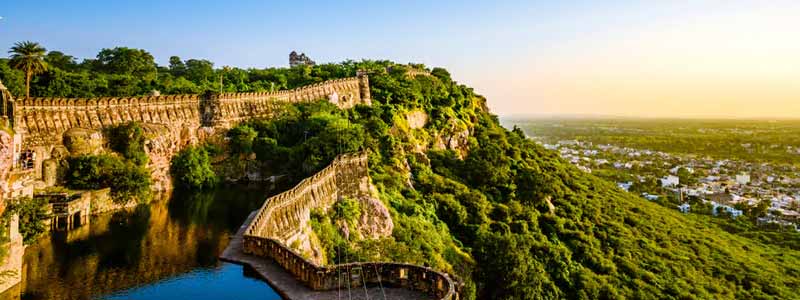
History of Chittorgarh
The city has been the capital of the Sisodia Rajput clan for centuries. Chittorgarh Fort witnessed some of the fiercest wars in the history of India. Even today the valor of the Rajput warriors is immortalized in the folklore and traditions. The geographical location and abundance of fertile land made it a significant state.
It is believed that the city is over a thousand years old and it has been destroyed and rebuilt from the ashes again and again. It is said that Chittorgarh Tour Packages is the largest fort in India. There are many temples, monuments & palaces inside the fort walls.
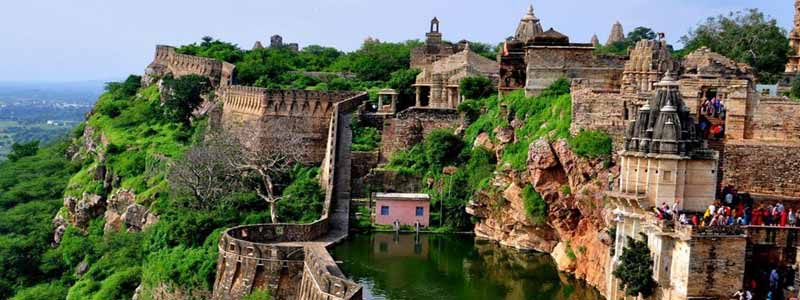
Places to visit in Chittorgarh
Chittorgarh Tourism is known for its valiant warriors as well as ladies who never compromised with their honor. Whether a furious battle or the legendary Jauhar (jumping in pyre); Rajasthan takes pride in these heroes and heroines of the past. They have been immortalized in many folk songs and poems that continue to attract people. A visit to the Chittorgarh Fort transports us back in time and makes us relive its moments of glory, defeat and joy. Chittorgarh Fort Tourism will mesmerize you and make you admire the courage of Rajputs that has created history. Some of the places to visit in Chittorgarh are mentioned as follows:
Chittorgarh Fort
Chittorgarh city is known for its huge fortresses in Rajasthan state. There are many big fortresses here, but the fort of Chittorgarh is a fort whose history is the most different and special. It was constructed during the reign of Maurya in the seventh century. It was founded in 734 by Bappa Rawal, ruler of Sisodia dynasty of Mewar. According to historical documents, the fort of Chittorgarh Tourism has remained the capital of Mewar for 834 years. Spread over 700 acres, the fort stands on the hill at a height of 180 meters from the ground and especially known as Chittorgarh Fort the capital of Mewar. At first, it was the rule of Guillot and later Sisodiya’s reign.
The fort is the best example of patriotism, courage, medieval heroism and sacrifice of Sisodia and his women and children in Mewar in the 7th and 16th century to the state. At that time, Rajput rulers, soldiers, women and locals used to think that sacrificing the fighting against the forces instead of surrendering the Mughal army. In 2013, in Phnom Penh of Colombia, in the 37th session of the World Heritage Committee, along with Chittorgarh fort, five more Fort of Rajasthan were included in the UNESCO World Heritage site.
Vijay Stambh
Vijay Stambh or Jai Stambh in Chittorgarh is considered a symbol of the victory of Chittorgarh Tourism. It was constructed from 1448 to 1458 by Rana Kumbha in celebrating the victory of Sultan of Malwa against Mahmud Shah Khalji. It is related to Indian culture and architecture. The Vijay pillar stands at 122 feet high and 47 square feet on its base, It has approximately 157 steps up to the 9th floor. A scholar of international fame, while looking at the 9-storey building in Vijay Stambh and said that on each of its bottom, various dimensions of religion and culture have been presented. From the 9th floor, we get a spectacular view of the city of Chittorgarh.
Rana Kumba Palace
Rana Kumba Palace is a historical monument where Rajput King Maharana Kumba spent his royal life. This fort was built in the 15th century and one of India’s finest architectures. It is a symbol of Rajput architecture and very popular among the Chittorgarh tourists.
Maharana Kumbha created architecture at the age of 35, Chittorgarh Tourism, Kumbhalgarh, Achchargad is the main source of 32 forts made by them. It is said that underground basement in the Rana Kumbha palace. Rani Padmini and royal women living in the palace used to use the basement. It has some other tourist spot, such as the Archeological Museum, Fateh Prakash Museum, Jaimal and Kalla, Vijay Stambh, Padmini palace and cenotaphs.
Padmini Palace
The three-story building situated in the southern part of Chittorgarh fort was built in the 19th century. Padmini Palace is located in the middle of the water. the place where Alauddin Khalji was allowed to see the image in Mirror of Rani Padmini. Seeing the image of Rani Padmini in the mirror, Allauddin went crazy with her beauty, and with the desire to win it, it was decided to destroy the Chittorgarh Tourism. The palace tells the story of courage and pride of Rani Padmini, the palace has a beautiful lotus pond. The architecture is wonderful and illustrated atmosphere attracts and draws tourists towards it.
Chittorgarh Jauhar Kund
Jauhar was the term used for self-immolated. Along with Rani Padmini, many other women of Chittorgarh Tourism committed suicide through self-immolation to protect their dignity from the lustful reign of Alauddin Khilji after defeat. This is a land of bravery as well as strategy. It depicts the tragic yet eternal love story of Rani Padmini and Ratansen. This is the place where Rani Padmini committed Jauhar and is said to be haunted. Rani Padmini jumped into the Kund and immolated herself.
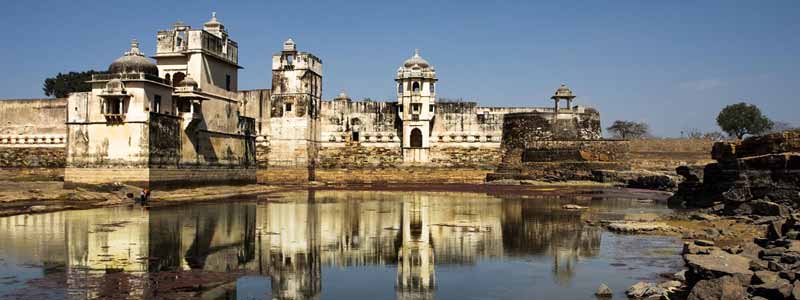
Best Time to Visit
Winter (October to March) is the best time to visit Chittorgarh Tourism, this is the time when the weather is pleasant and perfect for touring. Monsoon (July to September) too is a good time to visit this place as Rajasthan receives very less rainfall. Summer months June and July should be avoided, as the climate is extremely hot during this time.
How to Reach
By Air: The closest airport to Chittorgarh is the Dabok Airport, around 90 kilometres from the city.
By Rail: Railway stations like Chittaurgarh (COR) and Chanderiya (CNA) receive regular trains from other major cities of India.
By Road: Chittorgarh is well connected to other Indian cities by road.


